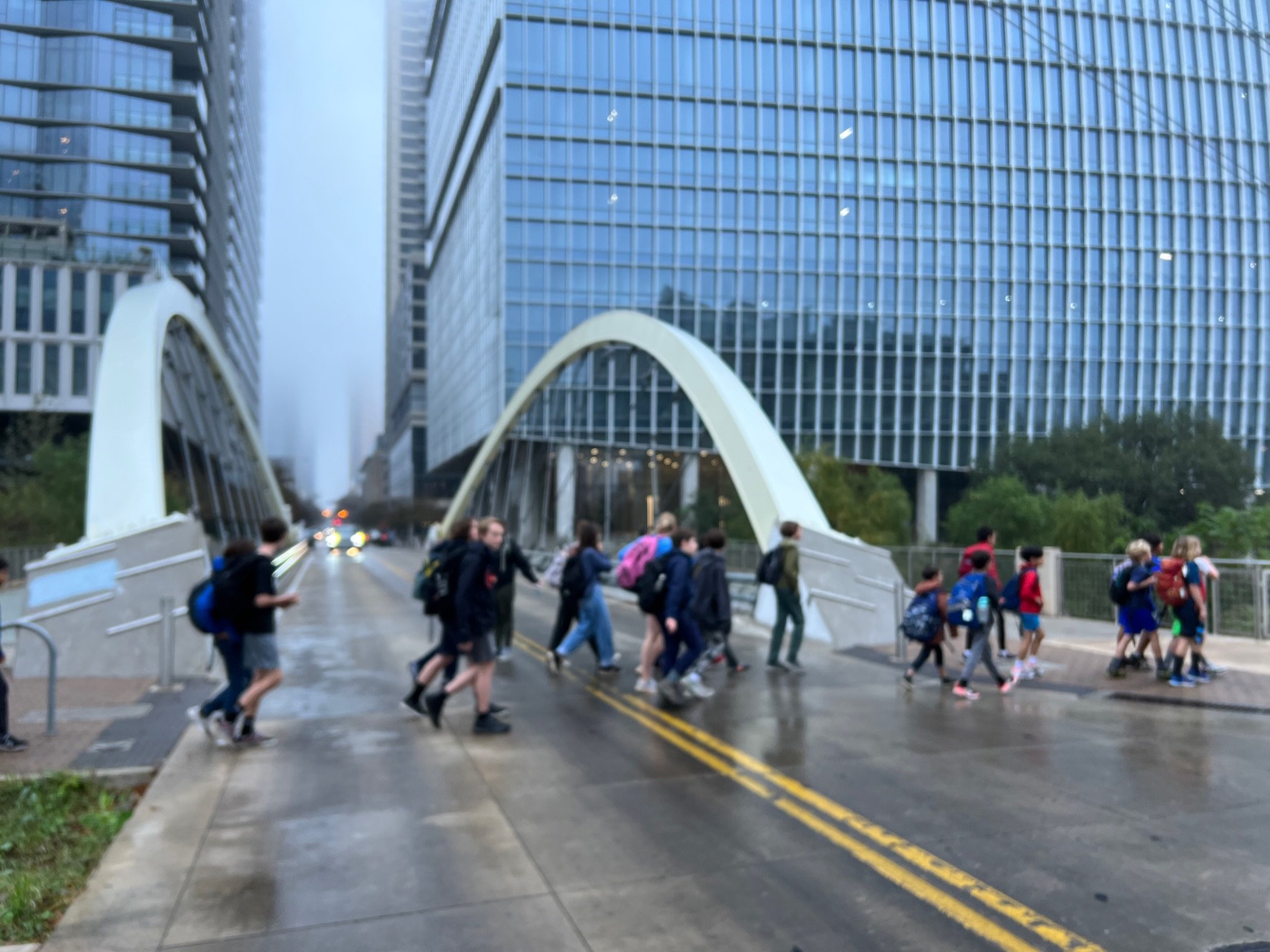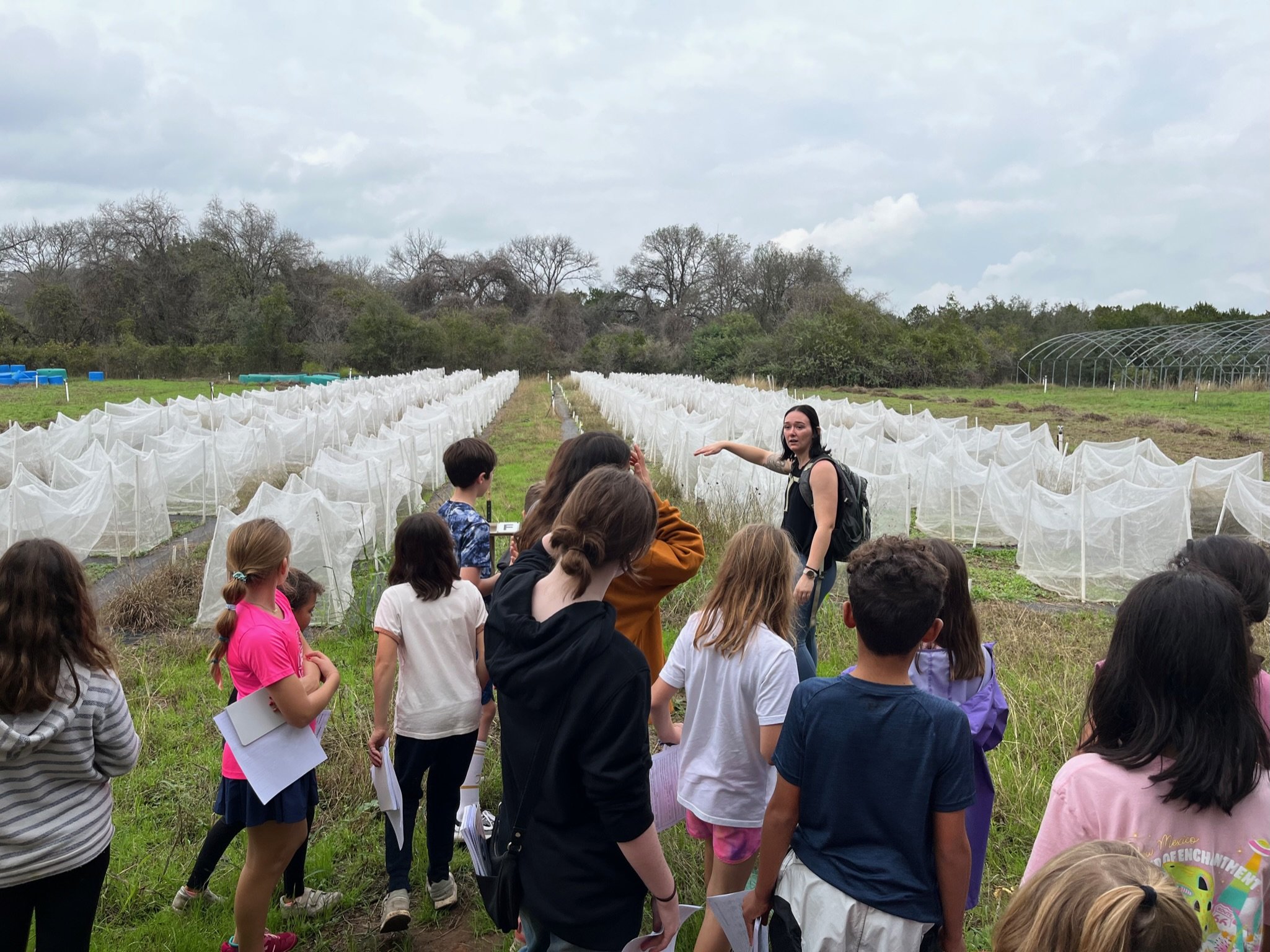Learning Within A Larger Ecosystem
If you’ve visited Long-View, you know we are situated in a retro-style building that has floor to ceiling windows on all external walls. Every academic space thus has a big view of the world outside our school; depending on which room you are in, your view may encompass the leafy branches of a tree, cars on a busy street, or cyclists headed home. The school feels open and connected to the world beyond our walls, and truly is connected. In every way we can, we think of Long-View as a porous organization, and work to use and be part of the wider ecosystem of learning that exists around us.
We believe it is important to get out of school, and we do this often. Daily we venture several blocks away to an 84-acre park filled with heritage oaks and a running creek, spending an hour for lunch and play. We are there again when the work of our young scientists calls for the need to collect a water sample or observe an ant colony. We also walk to the university at the end of our street, capitalizing on the chance to study its immense outdoor sculpture collection, see a mass spectrometer in action in a geosciences lab, or tour the data visualization lab in the computer science building. We’ve taken the city bus to a downtown theater, walked to a coffee shop to use it as a venue for a slam poetry exhibition, tested the cardboard boats our engineering teams designed by floating them in a nearby lake, visited a robotics lab, sought out a university professor in order to interview him for a research paper, walked to a building being built nearby to talk to the construction engineer, and attended the undergraduate architecture students’ studio reviews at the end of the semester in order to study the feedback cycle key to their work process.
Our learners gain from these regular and frequent opportunities to leave school. They have expanded opportunities to learn, they stay connected with nature and with the outdoors, they feel a part of the vibrant fabric of our city, they communicate with a range of people, and they see possibilities of the world. They also grow their “wayfinding abilities” and have lines of sight to careers and the adult world.
Getting out is a key element of the Long-View experience, but so is inviting others into the learning happening within our own walls. We invite interesting people to teach us about their work, learning about “knot theory” from a local mathematician or “singing mice” from a doctoral student. During Build Weeks we’ve talked to an ex-CIA agent and someone who travels the world supporting countries writing new constitutions. We’ve chatted with authors to enrich our own work as writers and skyped with biomedical engineers to complement a science unit. And we also regularly open our doors to educators and researchers studying learning, such as when a team from Lego visited or when a group of math teachers traveled from another state to see our classes in action.
Learning is precipitated on openness, opportunity, connections, depth, and curiosity. At Long-View we don’t wait for these to find us, but actively seek them out. Interacting with professionals and specialists helps us gain perspective, learning about a high level topic or visiting a university resource brings the excitement of novelty, and getting outside or waking to a venue brings a change of environment and the understanding that the opportunity to learn is all around us.








